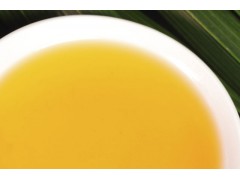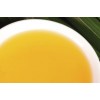Product detail:
Palm oil is a reddish-orange oil extracted from the pulp of the fruit of the African palm which originated from the Elaeis guineensis tree of West Guinea. It has been used for more than 5,000 years. Although it is native to western Africa it is extensively cultivated in other tropical countries. The fruits are arranged in large bunches, each of which may carry up to 20 pounds of fruit. The oval shaped fruits are 1 to 2 inches long and an inch or more in diameter. The fruits of the African palm contain between 30 and 70 percent of nondrying oil. The seeds of the fruit, the seed kernels also contain oil. The picture below shows the redish-orange fruit of the African palm.
Commodities/ Uses of Palm Oil:
In 1870, palm oil was introduced in Malaysia as an ornamental plant. The first commercial plantings were undertaken in 1917. It was not until the 1960's that production of palm oil was greatly expanded, to help reduce the economic dependence on rubber and coffee, which then represented the major sources of exchange revenue. Today, Malaysia is the largest producer and exporter of palm oil in the world, and palm oil provides about 10 percent of the Malaysian gross domestic product. In 1989, Malaysia produced 6.05 million tons of crude palm oil which accounted for 58.56% of the world production of that commodity" (http://www.mpopc.org.my/basic1.htm).
Palm oil has a variety of different uses ranging from constituents of vegetable oil to use in textiles. In terms of composition, palm oil has a high solid glyceride content which gives a desired consistency without hydrogenation. Because of its composition it is used quite extensively in cooking and found in a variety of foods, including cakes and bakery products. Palm oil is also used in soaps and candles. Palm-kernel oil is high in saturated fat which makes it good for use in the manufacture of margarine and cosmetics.
Asbestos has been one of the widely used materials, particularly for ceilings and roofing's of buildings. The carcinogenic effects of asbestos fiber has forced manufactures to utilize lignocellulosic materials to replace asbestos. The non-wood fibers from the oil palm have been used as the reinforcing material in fibro-cement board. Some other palm oil base products under development are: Fiberboard, cement board, compost, soap noodle activated carbon, tocopherols, and tocotrienol.
Palm oils contain many vitamins including; vitamin E, A and beta-carotene which promote good night vision, health of mucous membranes and skin, and the growth of bone. Palm oil plays a role in the body's use of fat which includes; energy reserve, thermal insulation, organ protection, tissue membrane structure and cell metabolism. Studies have shown that a palm oil enriched diet does not raise blood cholesterol and even leads to lower plasma cholesterol levels. The image below shows the height to which palms can grow.
Why use palm oil?
Palm oil (not to be confused with palm kernel oil, which is far richer in saturated fat and lower in monounsaturated fat than the oil from the fruit of the plant) is used widely today in many parts of the world without the dire health consequences prophesied in the United States in the eighties. For exam-ple, the Europeans—to whom we often look for a higher level of culinary and nutritional sophistication—have a rich tradition of using palm oil in their baked goods and confections. We chose it for a couple of our products because we wanted to create natural, healthier alternatives to the supermarket brands, but with comparable texture. Theirs contain synthetic hydrogenated vegetable oils; ours are all-natural and mostly organic. The oil won't rise to the top in our peanut butter, and it tastes great.
- Unlike other natural oils, palm oil is stable at room temperature.
- Palm oil dissolves uniformly when heated and solidifies as it cools, without separating from the food. This effect binds baked goods so they won't fall apart and creates a desirably homogenous, creamy texture in peanut butter.
- Palm oil increases a food's shelf life.
- Unlike synthetic hydrogenated oils, palm oil contains nutrients, like other natural oils.
- Palm oil has a pleasant flavor.
Although palm oil's stability is due mostly to its relatively rich saturated-fat content – when compared to many less stable natural liquid cooking oils – the alternative for a similar effect is "partially hydrogenated vegetable oil," the ubiquitous euphemism for synthetically saturated monounsaturated fat, a.k.a. "trans fat." If "saturated monounsaturated" looks like an oxymoron, that's because it is. The presto-chango hydrogenation of oils is alchemic sleight-of-hand, which carries a whole host of known health risks that far outweigh anything associated with natural cooking oils. And the popular supermarket brands of peanut butter and crackers use these synthetic hydrogenated fats. We believe that natural oils are always preferable to hydrogenated oils—just as natural butter is preferable to hydrogenated margarine.
Palm Oil Supplies
Palm Oil - Crude
Palm Oil - Refined / Refined Crude
Our company supplies and wholesales palm oil, as well as other fats and oils. We offer rapid and efficient service to our US and world-wide customers. We have in house quality controls for all the incoming and outgoing products. We use the most up to date methods prescribed by U.S.P., F.C.C., A.O.C.S., A.S.T.M., and via gas chromatography to verify that our oils and fats meet the required specifications and industry standards. Please contact us for great prices, fast delivery and proven quality.
Reliable Palm Oil Supplier - c GMP Certified - FDA Registered - Kosher
GENERAL SPECIFICATIONS
Refined Palm Oil is the oil obtained from the fleshy portion of the fruit from varieties of the palm Elaeis guineensis which has been refined, bleached and deodorized.

















